|
On Saturday 6th July, we have a visit to Wild Woodbury, Bere Regis, with a walk of approximately 4km/2.5 miles across uneven ground around this rewilding community project guided by Dorset Wildlife Trust Ranger, Seb Haggett. There is a portaloo on site at the car park.
If you are used to walking poles it will be worth bringing them. Walking shoes/boots are advised and please bring a packed lunch and refreshments. The weather is looking good for Saturday, with dry, sunny spells forecast. There are ticks on site, along with longer vegetation, so trousers are recommended. Also bring along any wildlife spotting equipment, binoculars, cameras etc. Please let us know if you are planning to join the trip and where you will meet us. No dogs. Meet at the Nadder Centre car park at 9:30am or at 10:30am up a short track off Southbrook Road, opposite Eldon Road in Bere Regis. https://maps.app.goo.gl/qXbC482vgk4pZ6Qt6 What3words: permanent.kings.chef Those of you that came along to our meeting in January will recall the fascinating presentation by Rob Farrington of the work he has been leading for the past two and a half years to re-wild the 170-hectare site, south-east of Bere Regis. The plot acquired by Dorset Wildlife Trust was In September 2021 with plans to return what was previously intensively farmed arable land to its natural state. The goal was to create an example of sustainable land use, contribute to tackling the climate and ecological crises, reduce high nitrate levels in the area (and prevent them from entering Poole Harbour), and to engage the local community. In the first year of the project, the land was allowed to naturally regenerate: there was an immediate increase in biodiversity and abundance, with the site list reaching 1300 species. During 2023, the second year of the project, work was carried out to ‘re-naturalise’ the headwaters of the River Sherford that run through the site. More information: https://www.dorsetwildlifetrust.org.uk/blog/tag/wild-woodbury Anticipated end time: Returning to Tisbury by 3:30pm The day was sunny with that slight September chill in the air and we marvelled at the greenness of the trees in Savernake Forest for this time of year. After a wet May and then regular bouts of rain, the trees were showing fewer signs of stress and had kept their leaves longer. Keith Lea had prepared a fascinating day of study and exploration for us as we went off the main paths and visited different sections of the forest.
One of the first tips he shared was the way to differentiate pedunculate from sessile oaks by inspecting the way the leaves and acorns attached to the twigs. Our alliterative aide memoire of sessile-stalk will hopefully stick with us, where the sessile oak has long stalks to its leaves, whereas the pedunculate oak has the leaves forming from barely visible short stalks. We had lively discussions about fungi, having spotted Shaggy parasol, Chicken in the woods, Beefsteak, Earthball and these tiny translucent white parasols perched up high on branches whose name we didn’t know. There were majestic ancient trees to marvel at and glades where trees formed circles round beaten down leaves and mast, or around grassy pastureland in the more open sections. Shifts in the scents of the forest and temperature surges were noticeable as we moved through the different sections. We had a truly immersive day in the life of the forest and Keith was an excellent leader, sharing his knowledge of the trees and wildlife. Clive Whitbourn, National Trust Ranger, started his talk with a focus on Hambledon Hill, the 47 hectare hillfort which came to the National Trust in 2014. It is a Site of Special Scientific Interest and a photo from 1940 showed how bare the hillfort was 80 years ago. Now the hillfort is managed lightly, with scrub kept low and any erosion kept at bay with terrace reshaping to preserve the profile of the ramparts.
Clive showed us the methods they use with wooden frameworks buried deep to support hessian bags full of chalk, which bulk out any damaged areas, with turf from the ditch placed on top. The chalkland grasses grow through and thrive. He mentioned that the south and south-west ramparts of Hambledon Hill are best for butterflies. Cattle scraping for minerals – they can go on binges to self-medicate - and visitors wearing down paths, all play their part in erosion. Roboflail, a mechanical AI cutter, is being used on some of the NT sites to great effect to keep the scrub low and save the man hours for other tasks. The NT relies on volunteer help on many of their conservation projects. Hod Hill is Dorset’s largest Iron Age hillfort and is unusual because it has a Roman fort nestled within, built at a time when the invaders needed to defend their capture of this Durotriges stronghold. Clive showed us how the framework and hessian bag method was also used to repair a bridleway here. In terms of nature conservation, Texel sheep are good grazers and White Park cattle are brilliant for rough pastures. Yellow Rattle, which suppresses coarse grass growth, is doing well at Winn Green and there are plans this year to brush-harvest the seed from there and broadcast it to the newly purchased Clubmen’s Down, a 30 acre piece of arable. Across Clive’s patch and the various Downs and hillforts, uncommon species are being noted: Bee and the Great Butterfly orchids, and the unusual Autumn Lady’s Tresses; Waxcap fungi; Marsh, Silver-spotted and Danville Fritillaries, Grizzled Skippers, Small Blue and Adonis Blue butterflies; Great Green Bush-crickets and Glow worms. Clive’s talk gave us plenty of inspiration for visiting these places, particularly in the spring and summer! Can anyone help with the identification of this splendid fungus photographed by Jenny Farrer near Withyslade Farm ?
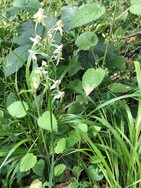 Photo: Elizabeth Forbes Photo: Elizabeth Forbes Organiser: Peter Shallcross The RSPB’s 33-hectare reserve sits in the middle of Cranbourne Chase just north of Sixpenny Handley via Ebbesbourne Wake. This ancient wood (along with coppiced hazel and maple, there are areas of oak, scrub and mixed plantation, with glades, rides and deadwood) has been managed for centuries, creating a special place for some magnificent wildlife, including blackcap and marsh tit, colourful wildflowers and small mammals like dormice. Openings in the trees create pockets of sunlight to attract butterflies, including the silver-washed fritillary (see below) and white admiral (not seen). 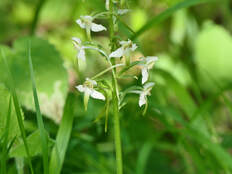 Photo: Andrew Carter Photo: Andrew Carter The first excitement was butterfly orchids - a taller woodland plant (above) compared with the lesser butterfly version which is found on more open ground. There were also many common spotted orchids. Lots of different grasses, reeds etc. One of our guests proffered this helpful way of telling the difference: Sedges have edges Rushes are round Grasses are hollow Right down to the ground. So 'now you know', as she said! The blackberries were really only just coming into flowers, but once fully out (and with the impending heatwave) this will become an emporium for butterfly spotters. Something of a surprise were several different kinds of fungi: identification welcome! This being ancient woodland might explain the profusion even at this time of year. 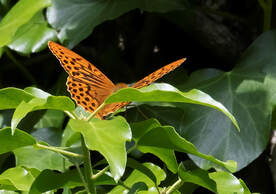 Butterflies were disappointingly in rather short supply although one silver washed fritillary (the silver wash is on the underside of the wings) was snapped Abby Eaton and others we saw were newly emerged and pristine. There were some fascinating moths, including a longhorn with, indeed, unbelievably long antennae, a surprising deposit of buff tip moth eggs and caterpillars, a large skipper butterfly all of half an inch long and a spotless ringlet (the males sometimes don't have spots). The visit ended with a peaceful picnic lunch on logs helpfully positioned in the shade, probably by RSPB volunteers. Andrew Graham writes that, 'Autumn is a good time to keep a lookout for some of the approximately 15,000 species of fungus which can be found in the British Isles. They vary tremendously in colour, size, shape, and form and can be fascinating things to look at. A small number make good eating, but most are unpleasant or at best tasteless. A few are deadly poisonous, so never eat fungus unless you are absolutely certain of your identification and always wash your hands after handling any of which you are unsure. 'Species are associated with different habitats and species so looking for fungus in a variety of locations is a way to find a good variety. Warm damp weather seems to encourage their growth. Those to be found on the ground are often short-lived and start to decay quite quickly or start to get eaten by invertebrates. Bracket fungus, that grow in plates out of the stems of trees, may last for years, each season throwing out a new plate. When trying to identify fungus, note the colour and the cap’s underside. Whether this is made up of gills, pores or spikes can help to identify the family, while location and colour will help identify the species. Despite the variety, all mushrooms and toadstools are fruiting bodies, designed in different ways to shed spores.
'These spores germinate to create threads, called hyphae, which grow to form a network called a mycelium. This network of threads grows to permeate the soil or tree on which the toadstool grows. The hyphae absorb nutrients from the substrate in which they live and in so doing contribute to decomposition. Many fungi form a symbiotic relationship with the roots of trees and shrubs. However, others are parasitic and can be very destructive by taking nutrients from their hosts, eventually causing their death. Some mycelia can be very small while others can spread through large areas of soil and be very long-lived. One is thought to be more than 2,400 years old and covers more than 3.4 square miles, surely making it one of the largest living organisms on the planet.’ Two books about funghi that you may enjoy and find helpful, are Mushrooms and other Funghi of Great Britain and Europe by Roger Phillips, and the recently published Entangled Life: How fungi make our worlds, change our minds and shape our futures, by Merlin Sheldrake. One of my character deficits is a complete lack of interest in science-fiction but this is more than made up with a curiosity for the macabre and in the natural world there is no shortage of amazing case studies. The most recent one is the 'zombie' cicadas of North Carolina. I won't go into the details here (as I did with the zombie dung flies last year) but I invite you to look them up on the internet using the key words psychedelic fungus.
A much gentler subject is that of butterflies - Andrew Graham writes: 'Autumn may be approaching but in the right weather conditions it is still worth keeping a lookout for butterflies. A dozen or more species can still be expected to be on the wing in late August and into September. 'The white butterflies, which seem to have had a good year, will keep flying as they have more than one brood a year which may overlap. The second brood of large and small whites may have laid eggs on suitable (though not necessarily from your point of view) food plants in your garden and allotment, the resulting caterpillars feeding hungrily ready to pupate before spending the winter as a chrysalis. If we have a favourable autumn, there may be a third brood of large whites later in September. 'Many will have noticed the good numbers of peacock butterflies this summer: most buddleia bushes hosted at least few in July and August. Small tortoiseshells have also done better than in recent years. After feeding up on flowers’ nectar to increase their fat reserves, by late summer both species will start to look for suitable hibernation spots. Garden sheds and garages are often selected as places where they will be protected from frost and rain until the first warm sunny days next spring. If one mistakenly comes into your home at this time this will be too warm - and bright - for it through the winter, so it is better to put it outside to find somewhere more suitable to hibernate before the weather really deteriorates. 'A number of our blue butterflies have a second brood with adults on the wing in August and September. Common blues and the brown argus can be seen in the vicinity of Tisbury but the bright electric blue adonis blue is found up on the chalk downland. The freshly emerged male is just so bright it is hard to mistake: if you are unsure whether a blue butterfly you see is bright enough to be an adonis, then it probably isn’t one. 'Another downland specialist which is right on the edge of its range hereabouts is the silver spotted skipper which can be found at Fontmell Down and in spite of being a tiny fast-moving creature and elusive, each summer you will see people carefully scanning the turf of the down’s steep hillside hoping to catch a glimpse. 'At time of writing, we are “enjoying” the heat of one of the plumes of hot air reaching us from north Africa. What remains to be seen is whether migrant butterflies such as the painted lady and clouded yellow come with it. There was an eruption of painted ladies in 2019, but they have been extremely thin on the ground this year. We rely on annual migrations of this species as they reverse migrate back towards Africa at the end of the summer and only a few overwinter here. Clearly few made it through last winter, perhaps as it was so wet. 'Clouded yellows, which are a wonderful sight in late summer, are a rich buttery yellow/orange colour in flight. They are strong fliers and frustratingly are more often seen in flight than perched. They can be told apart from the male brimstone that may still be about it as is more lemony yellow and lacks the black wingtips of the clouded yellow'. |
Photo: Avocets (Izzy Fry)
The headers display photos taken by our members. Do get in touch via the Contact Form if you'd like to submit a photo for selection.
Archives
May 2024
Categories
All
|

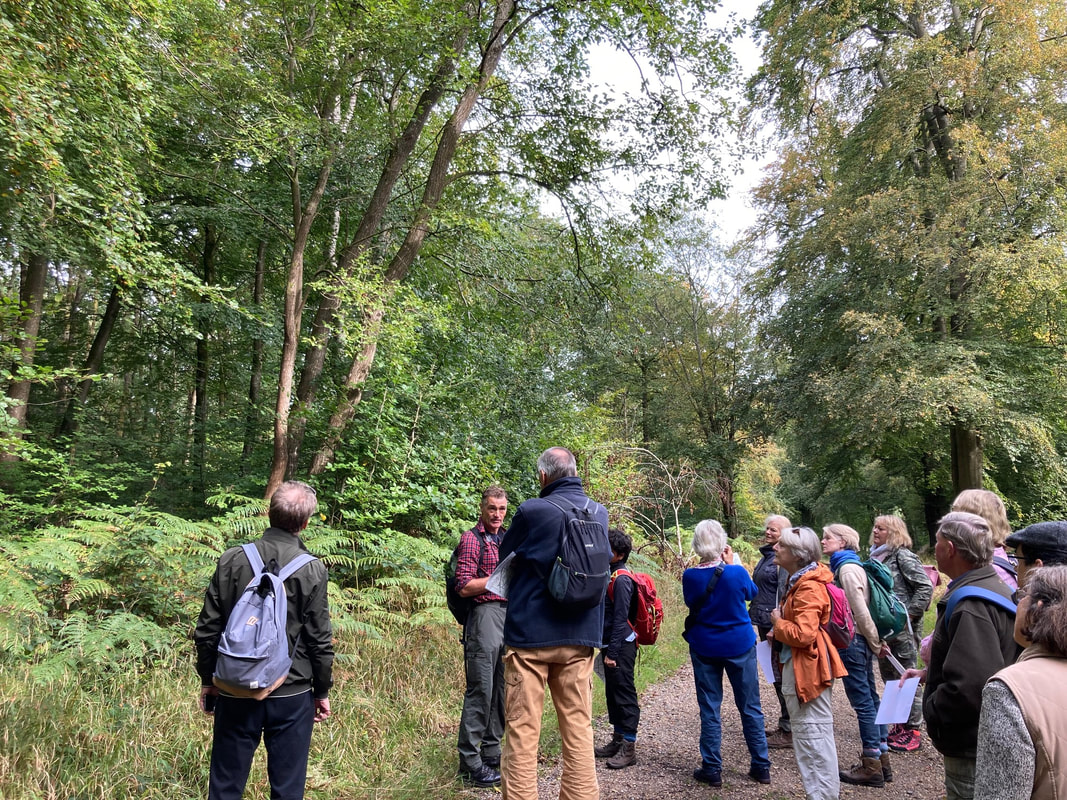
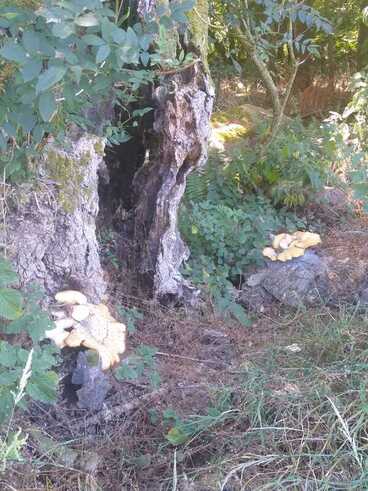
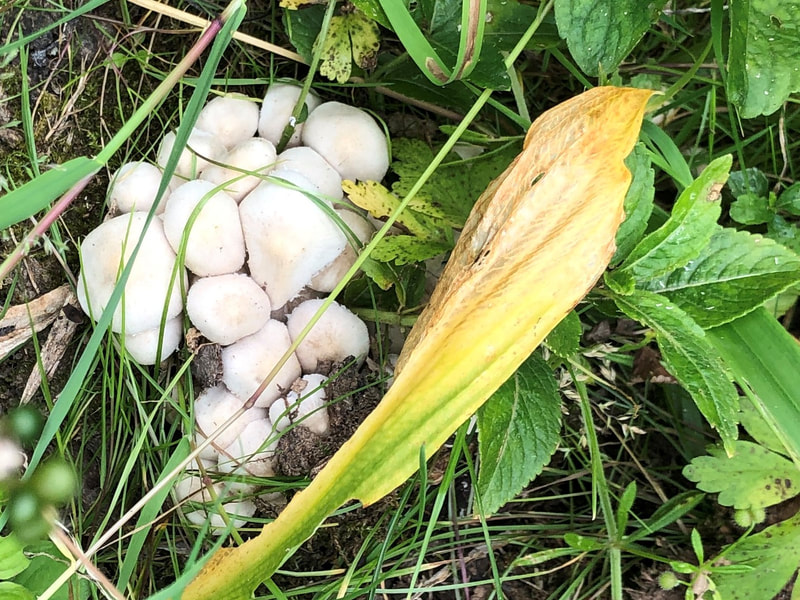
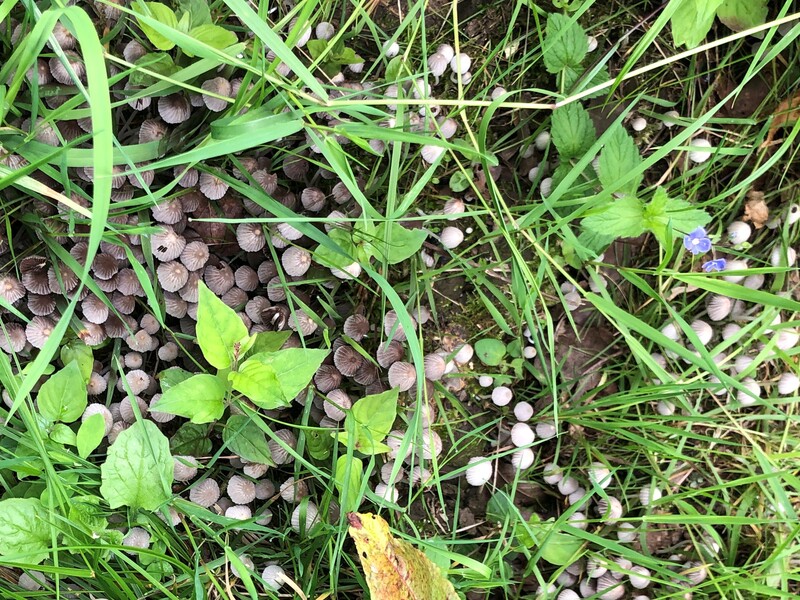
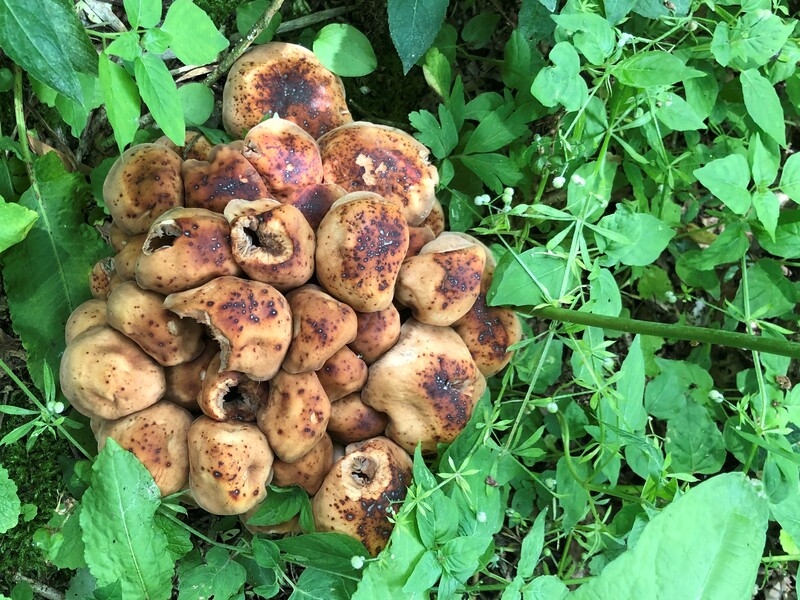
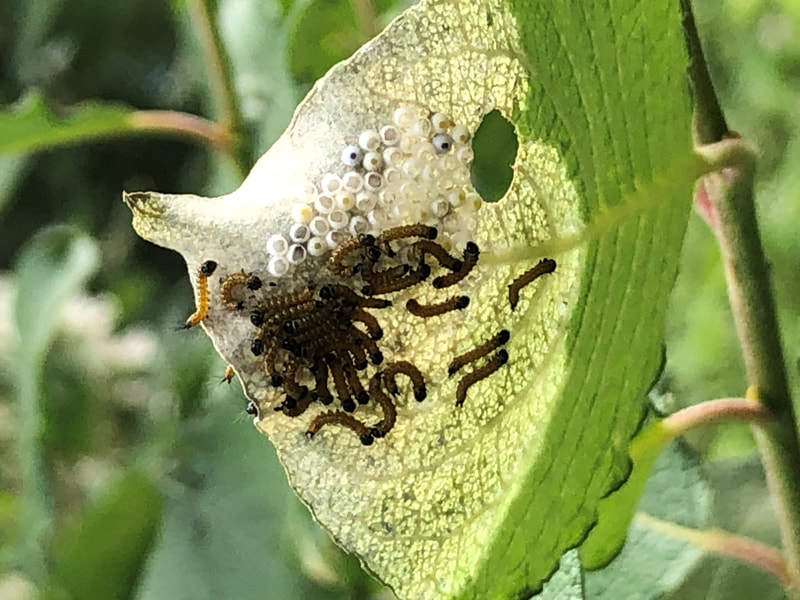
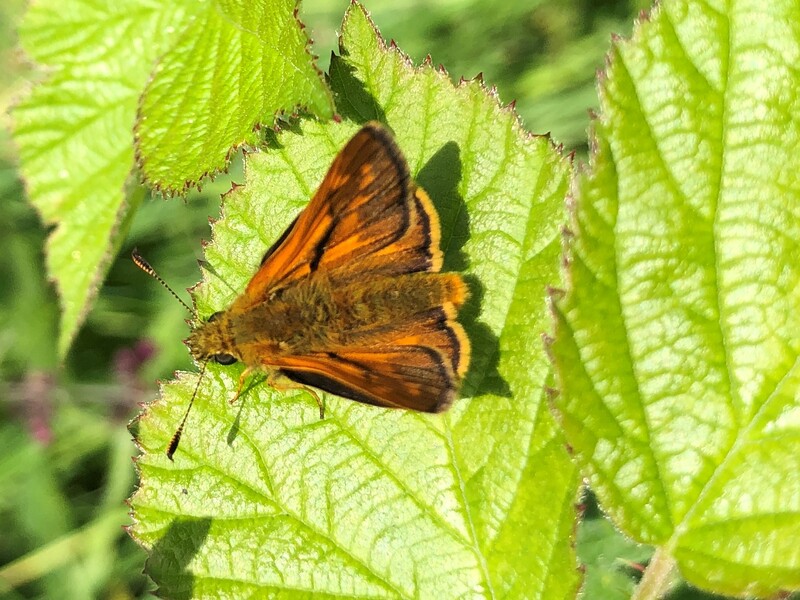
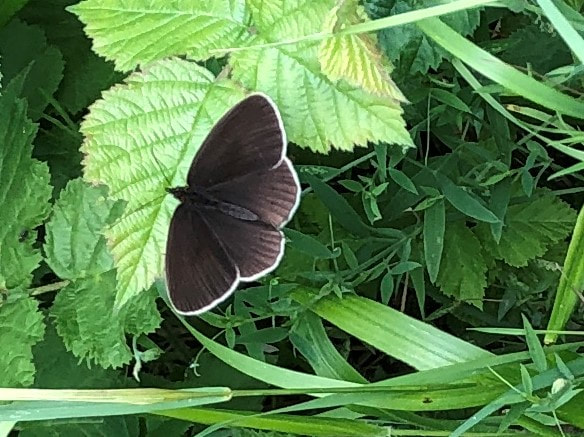



 RSS Feed
RSS Feed